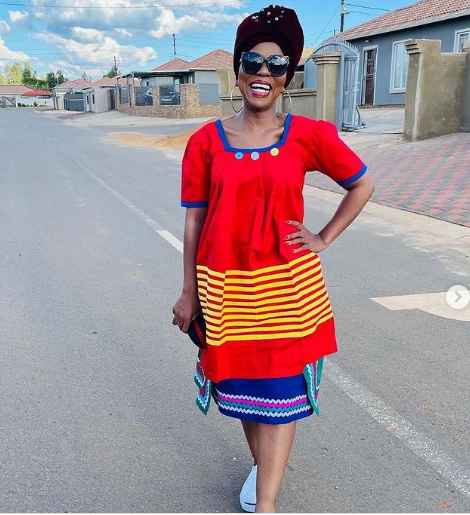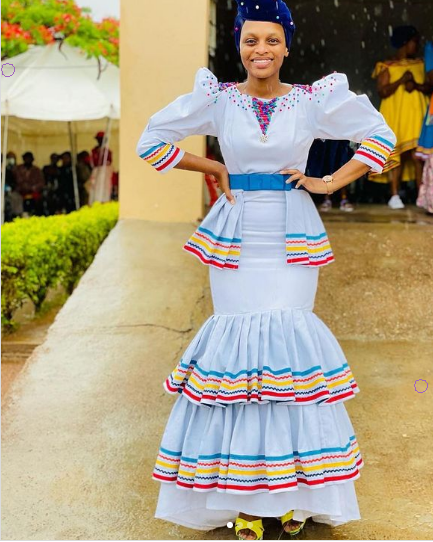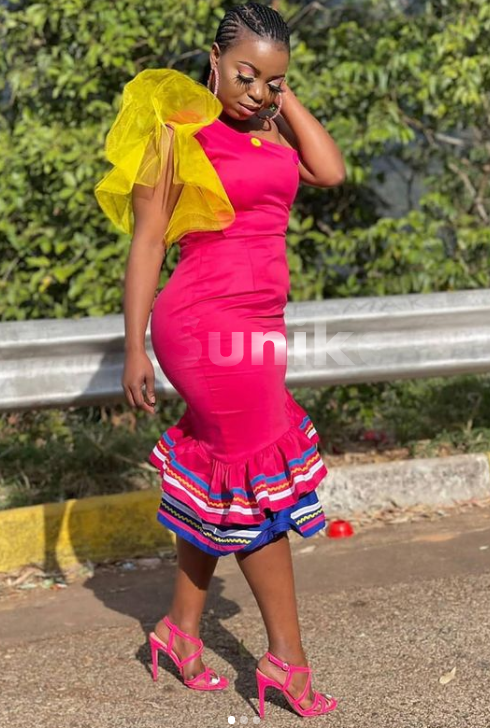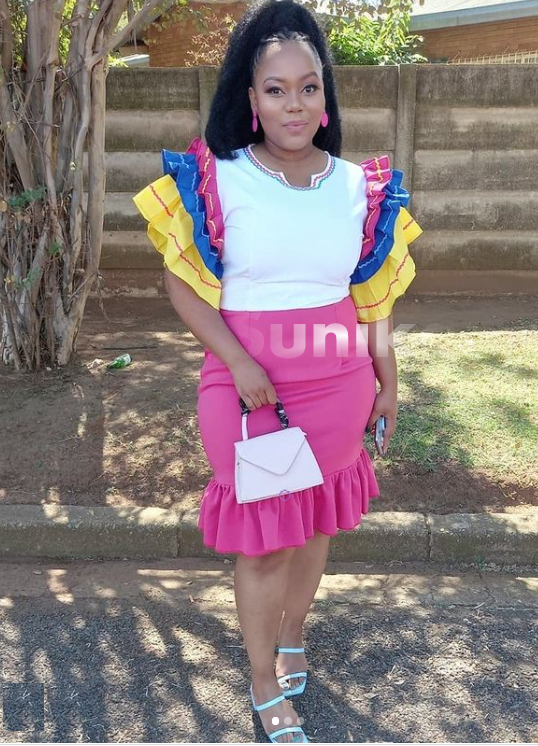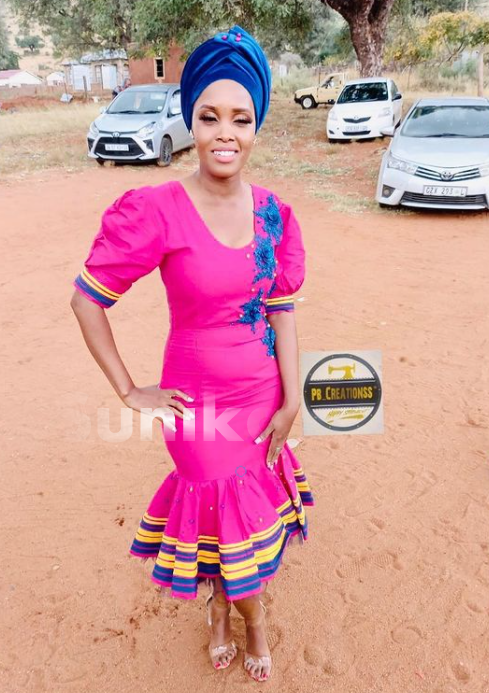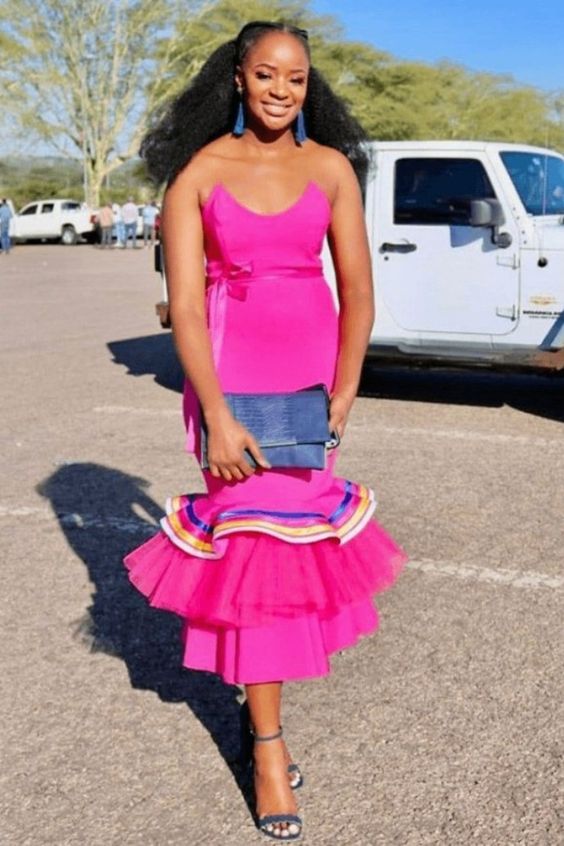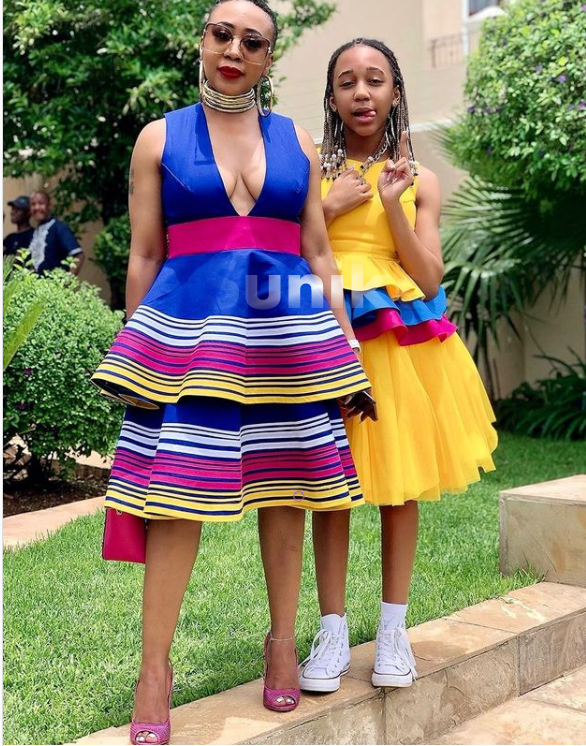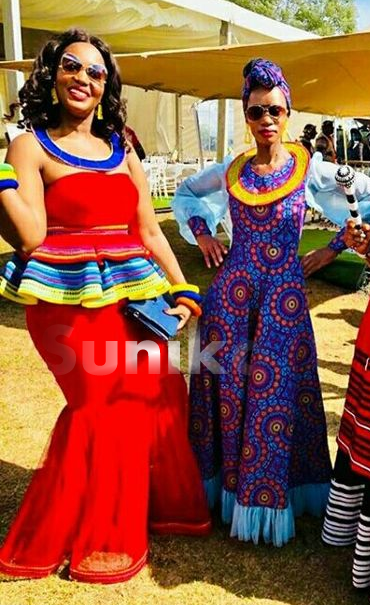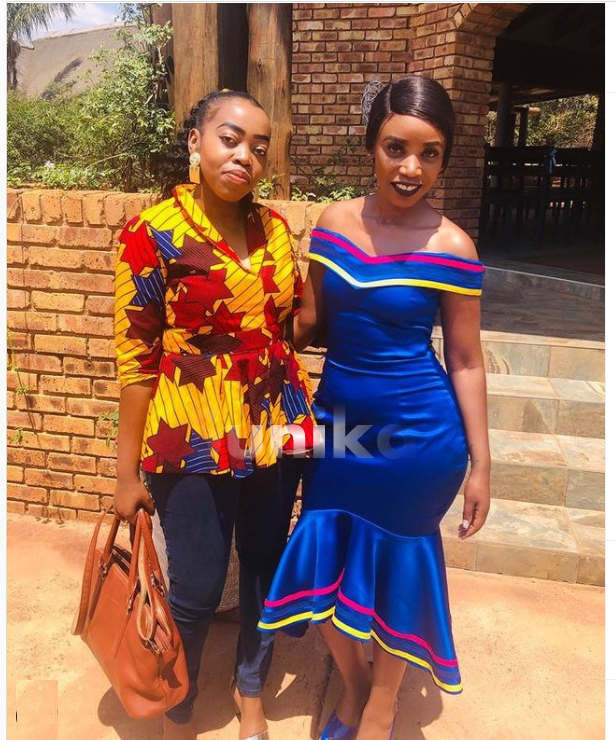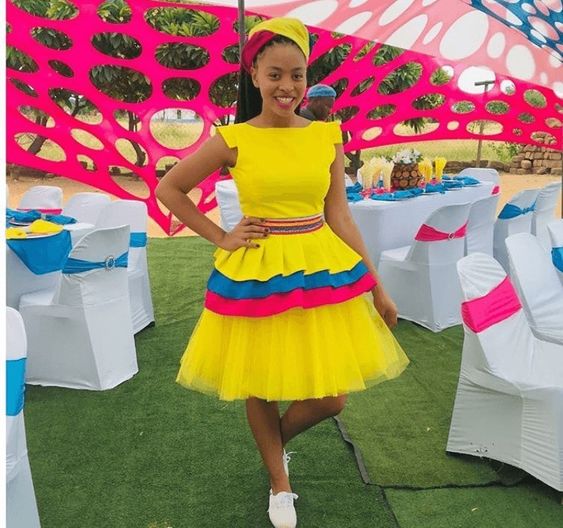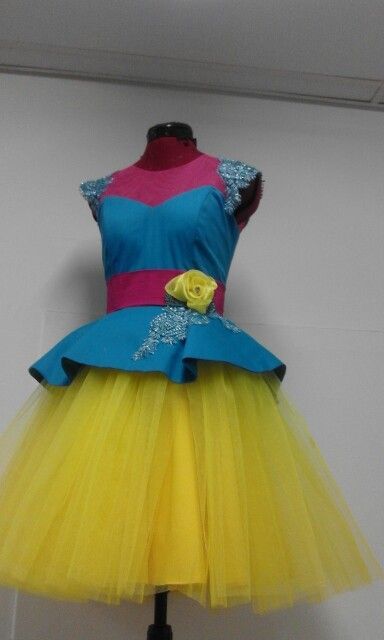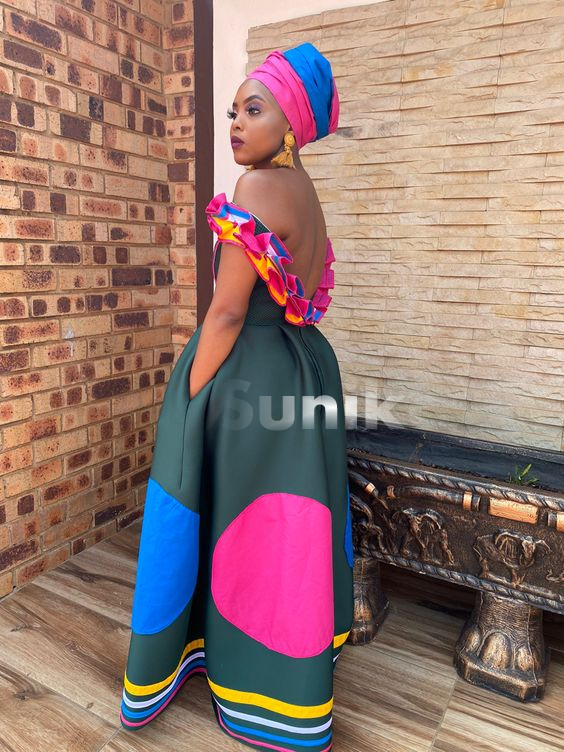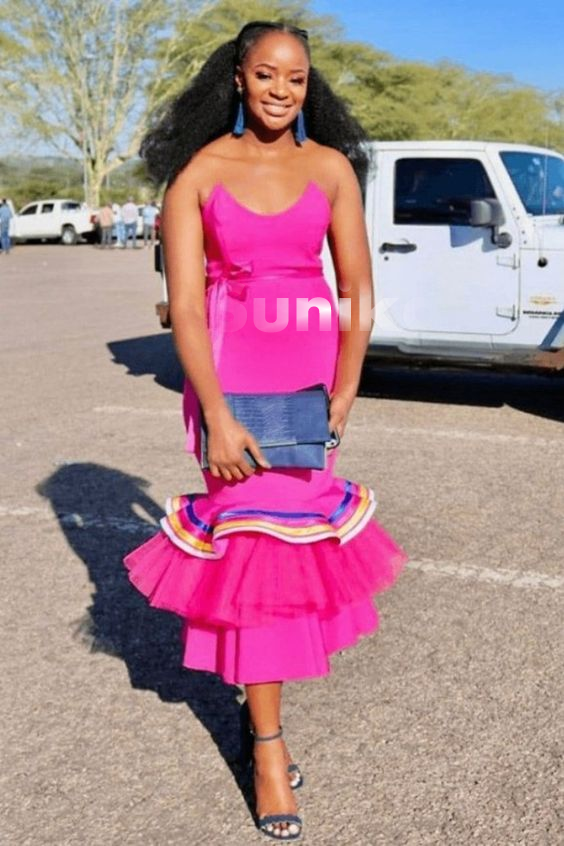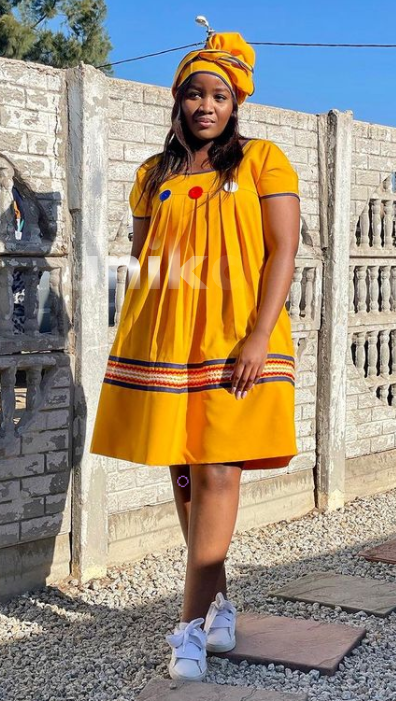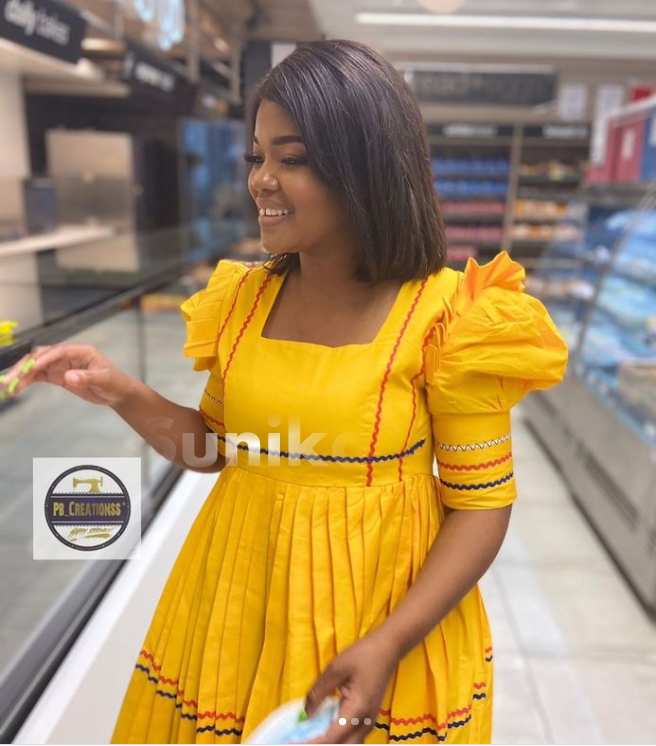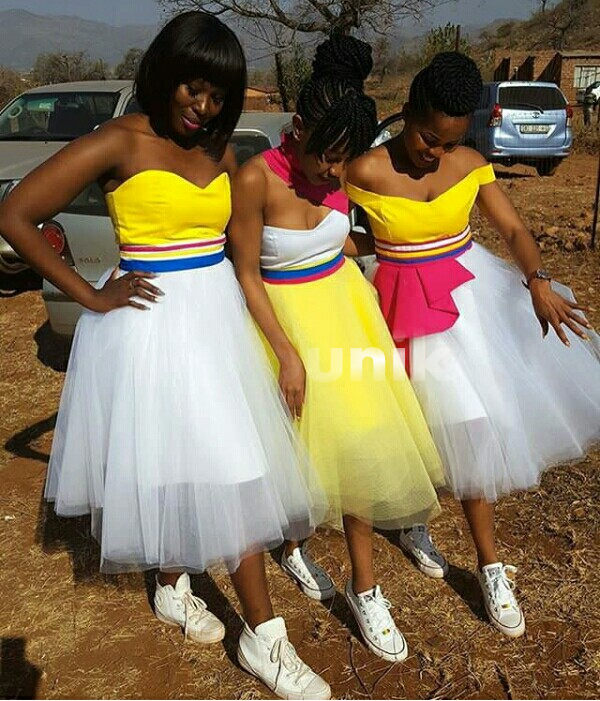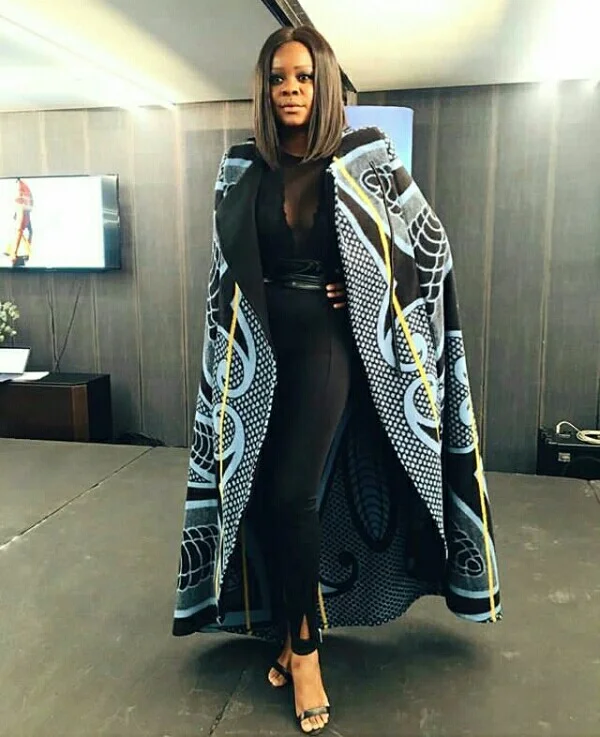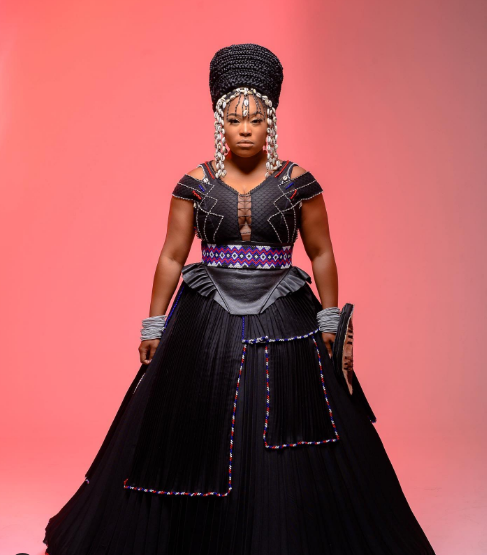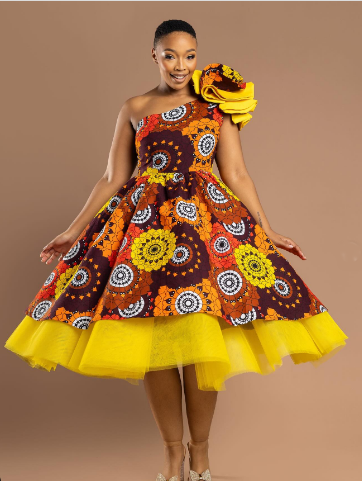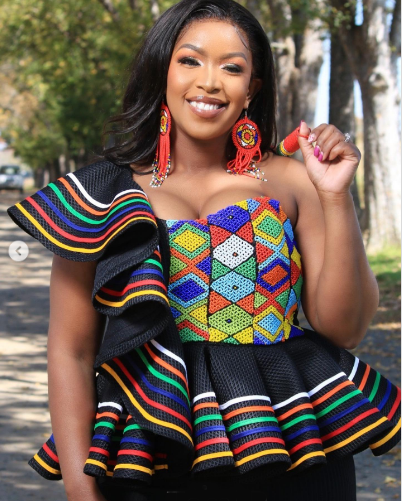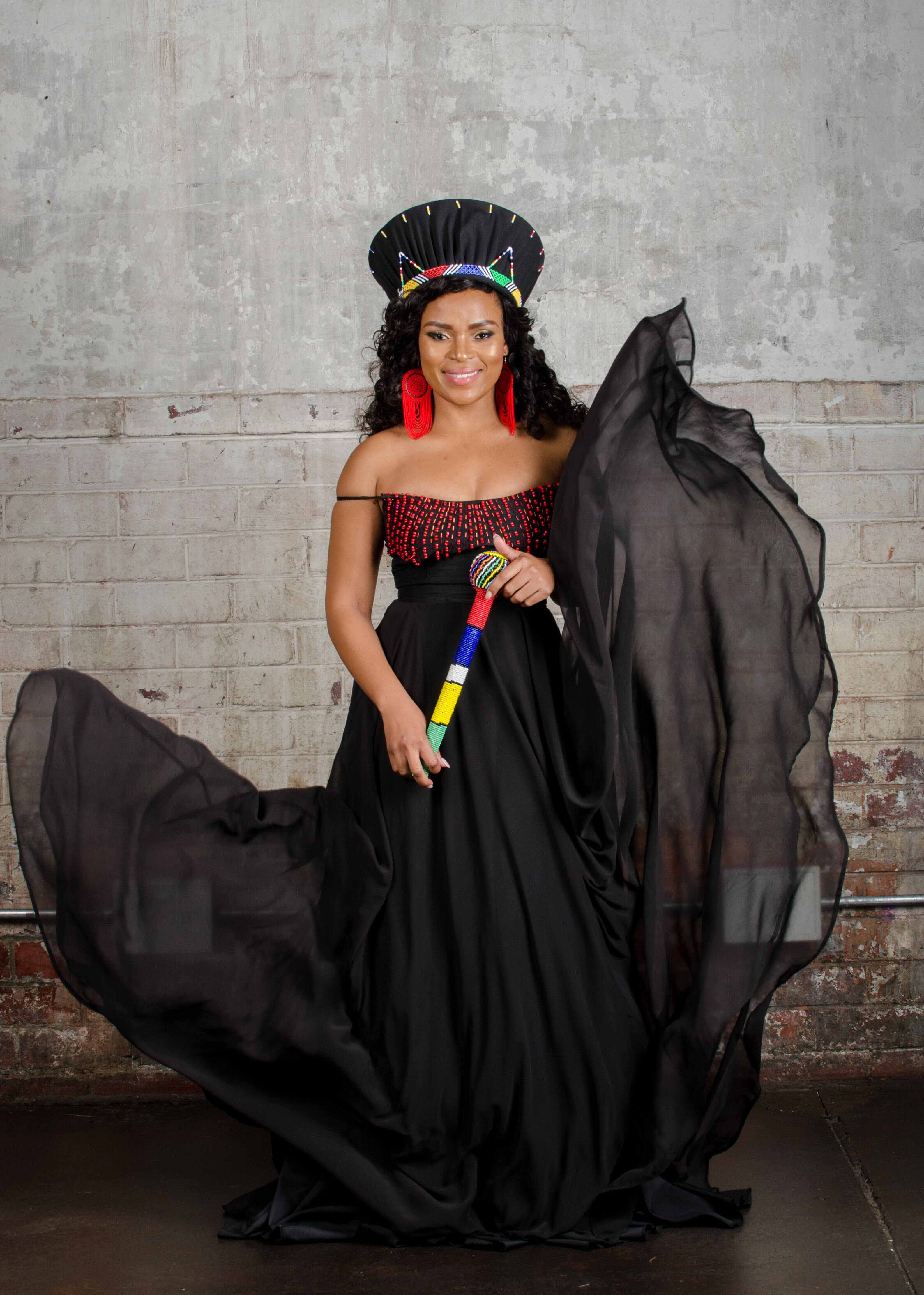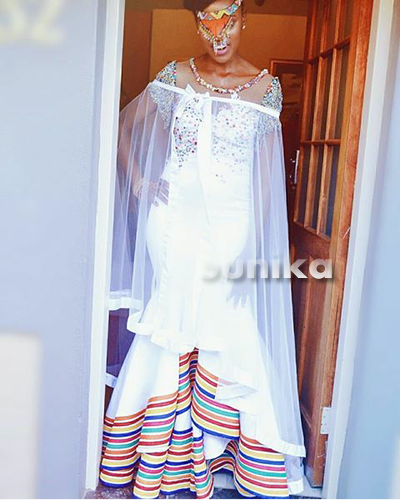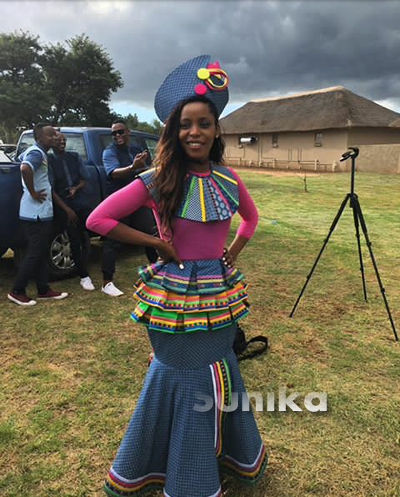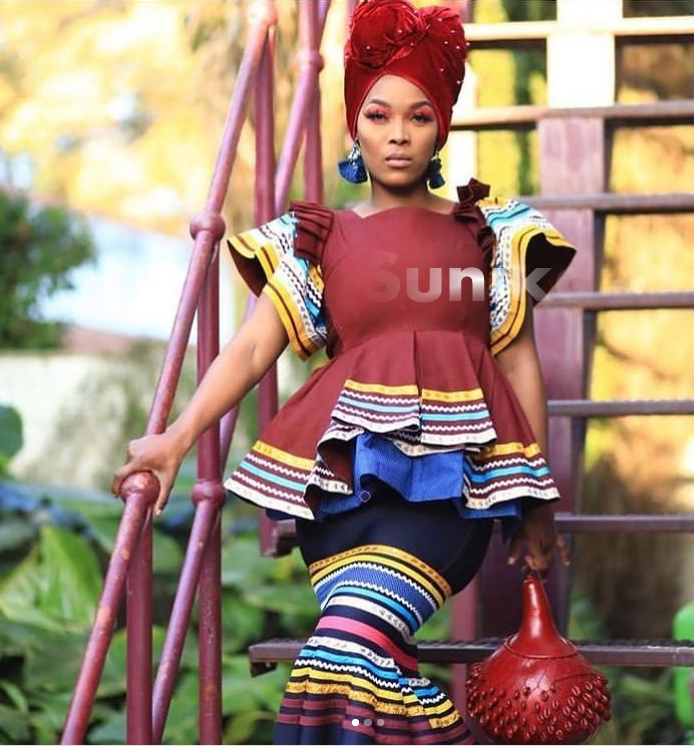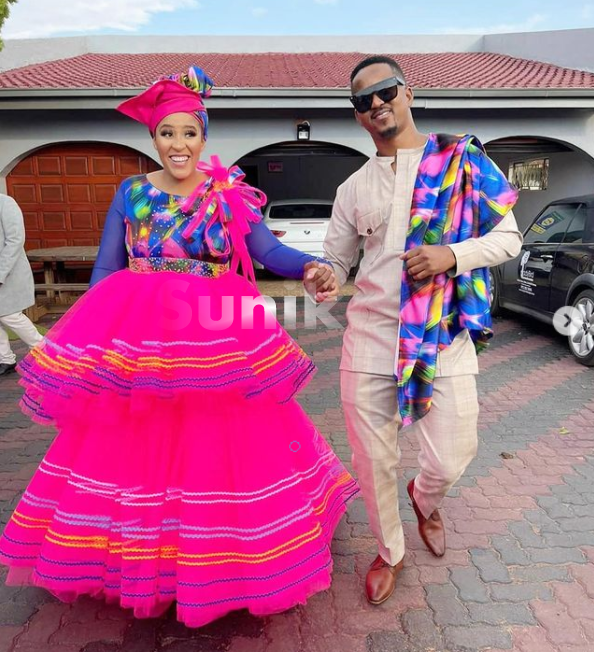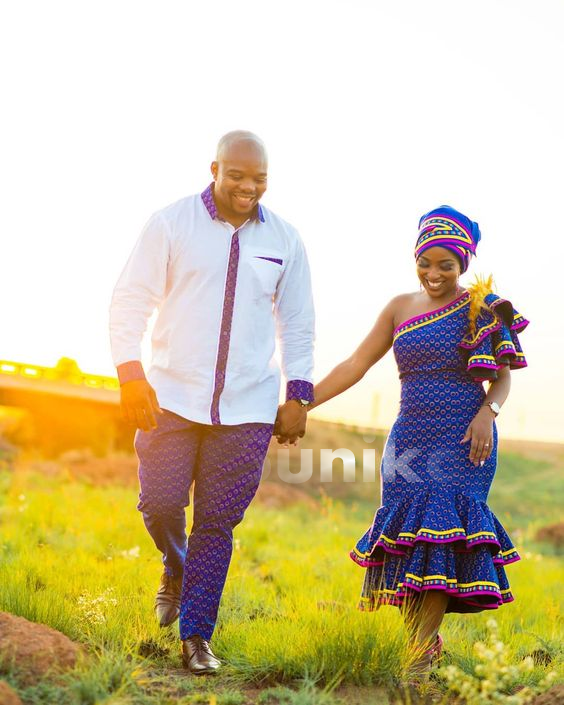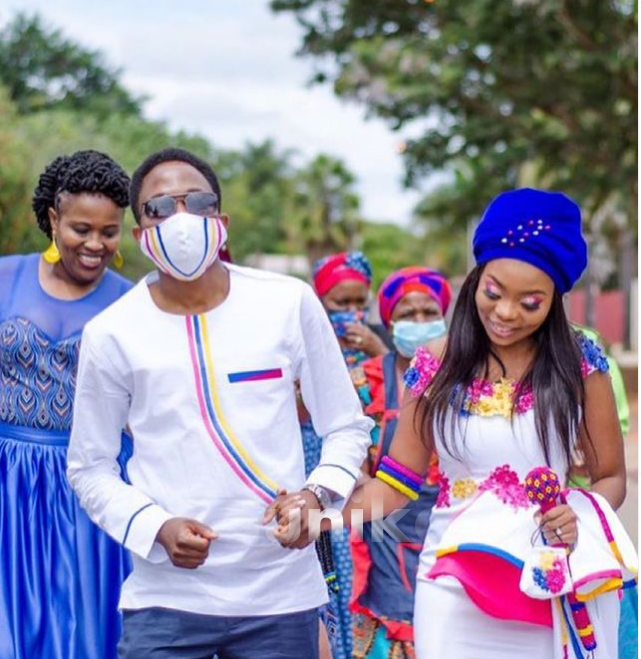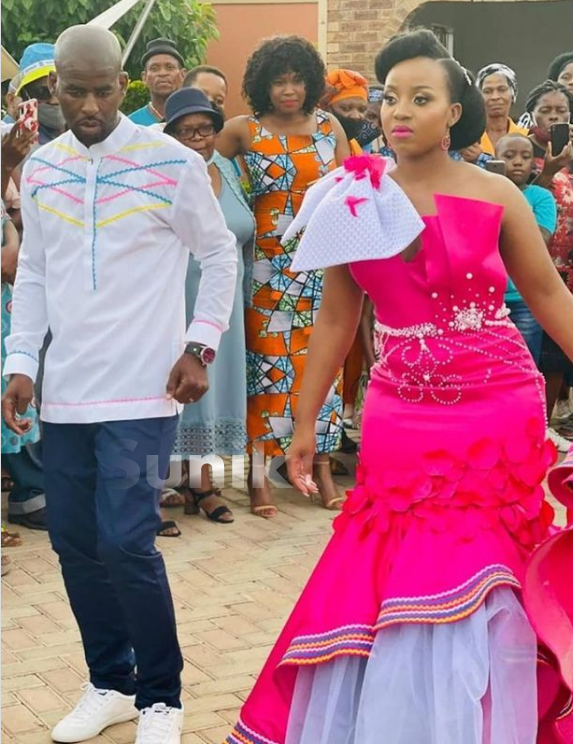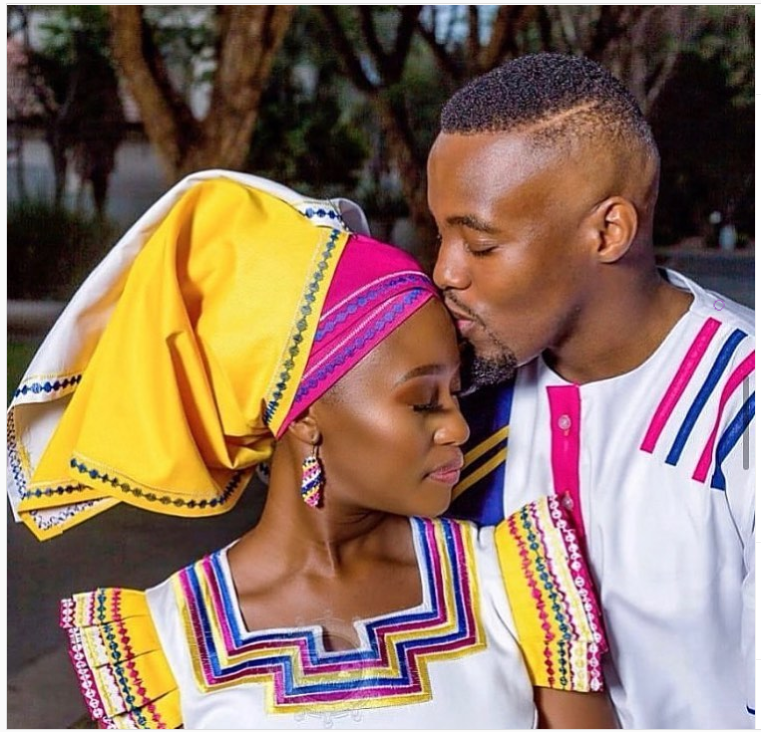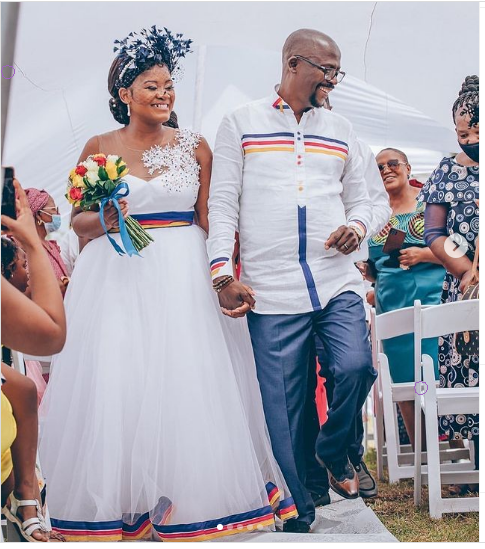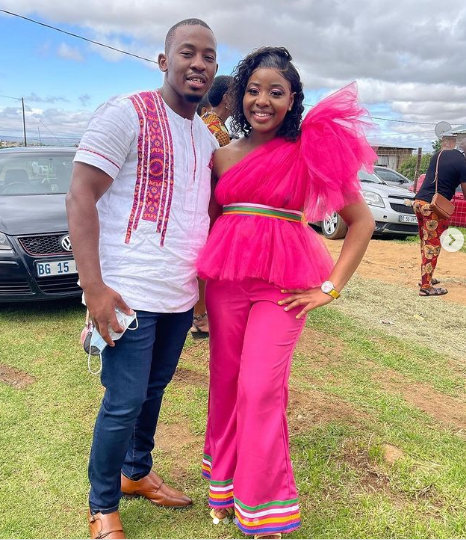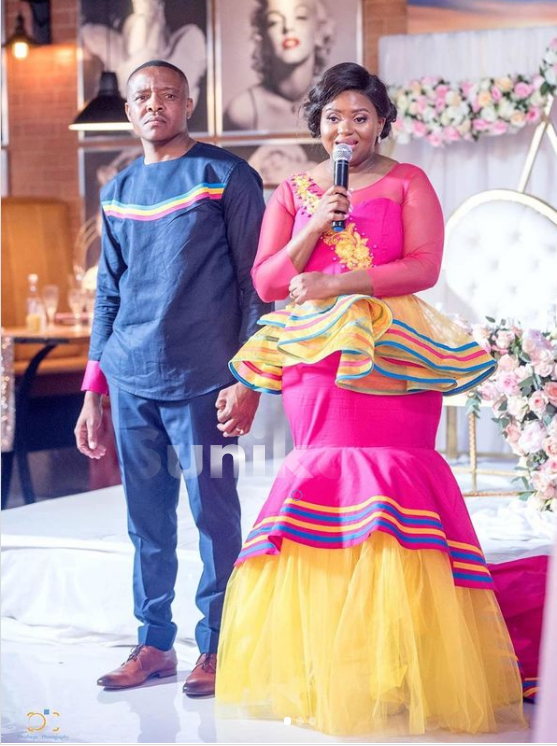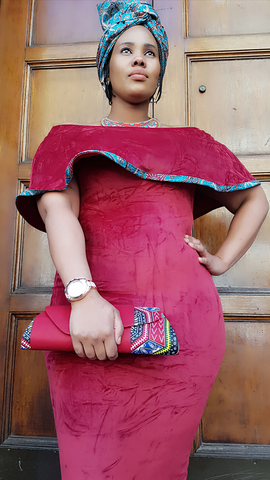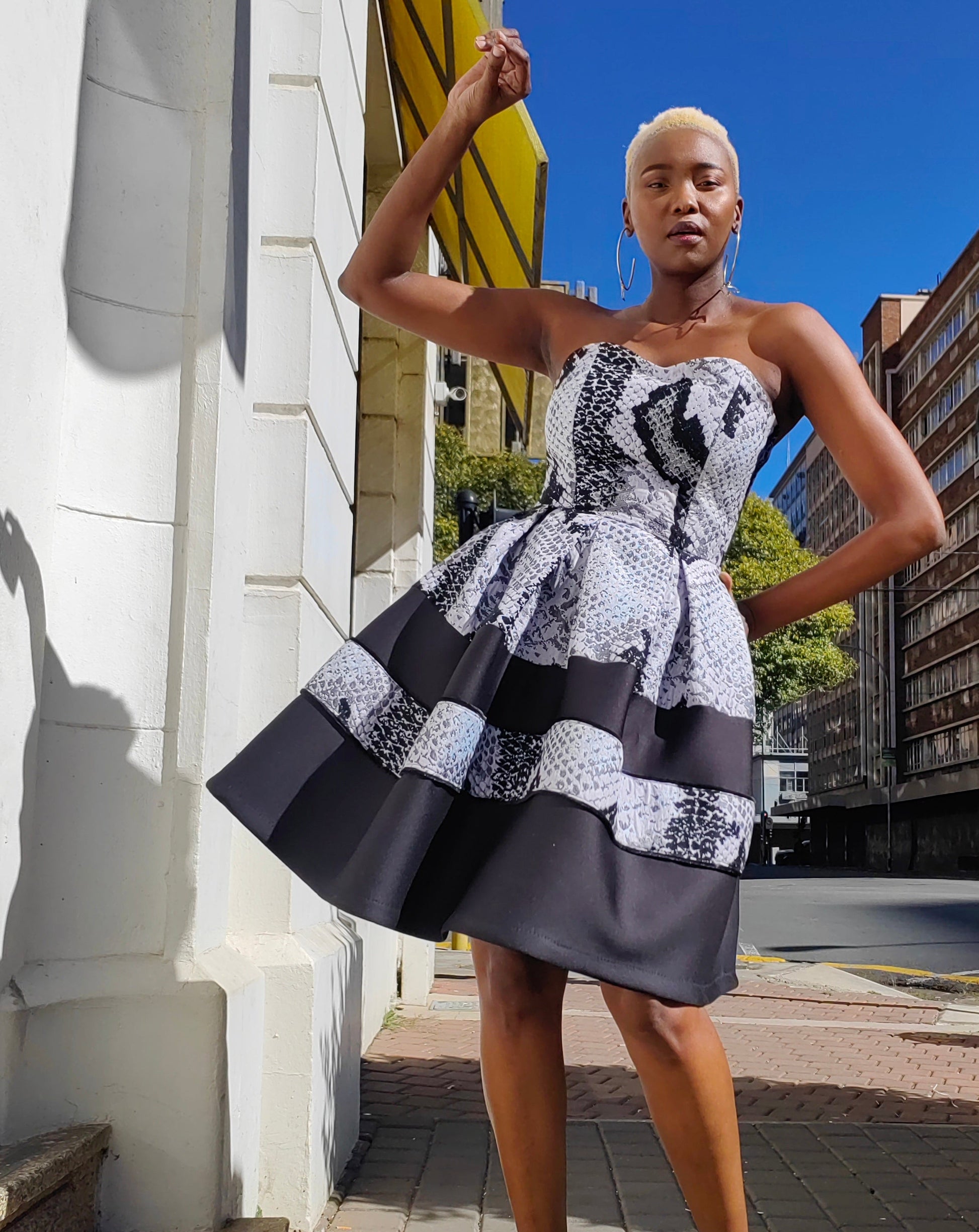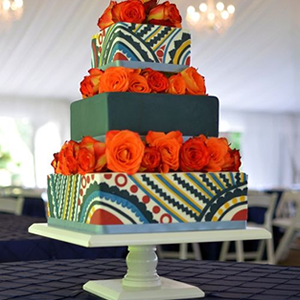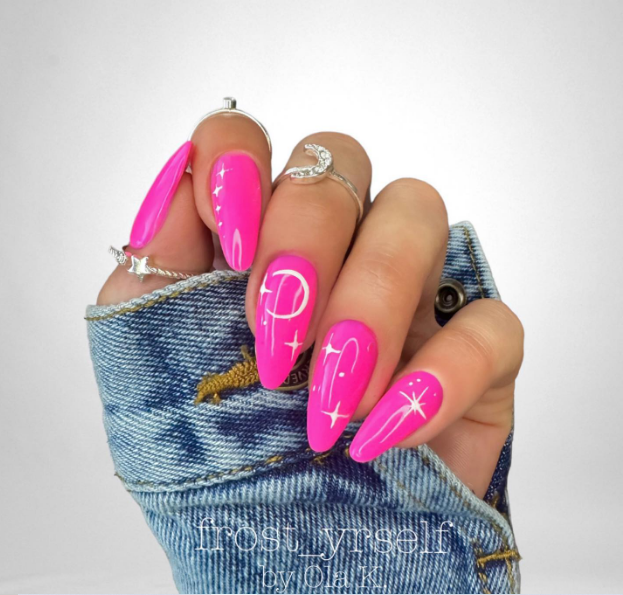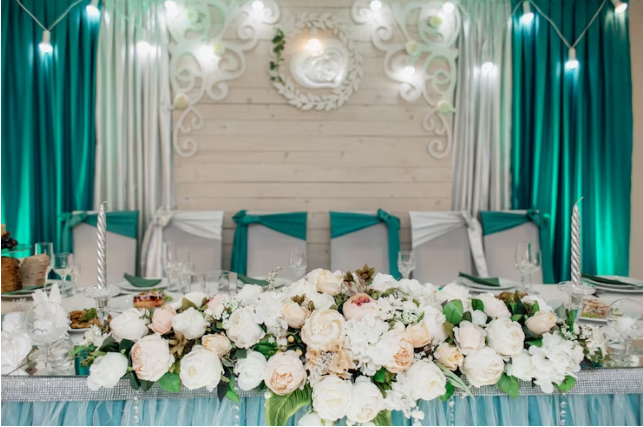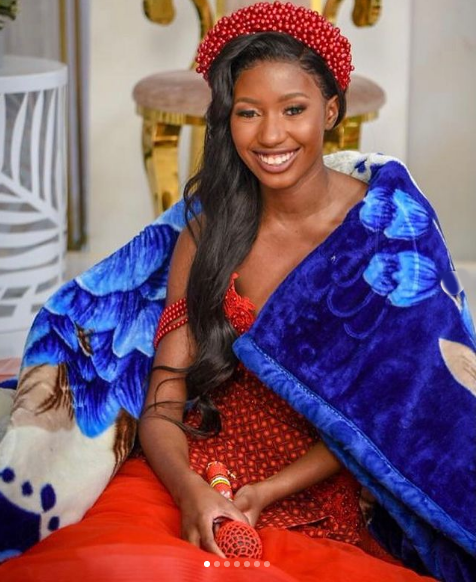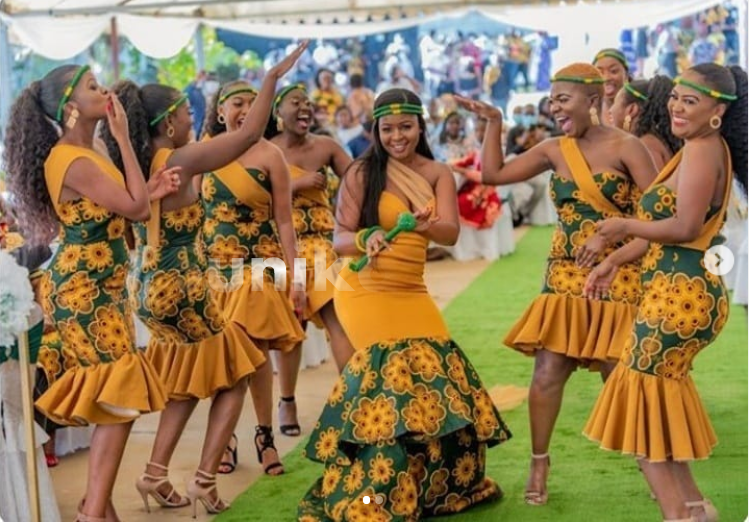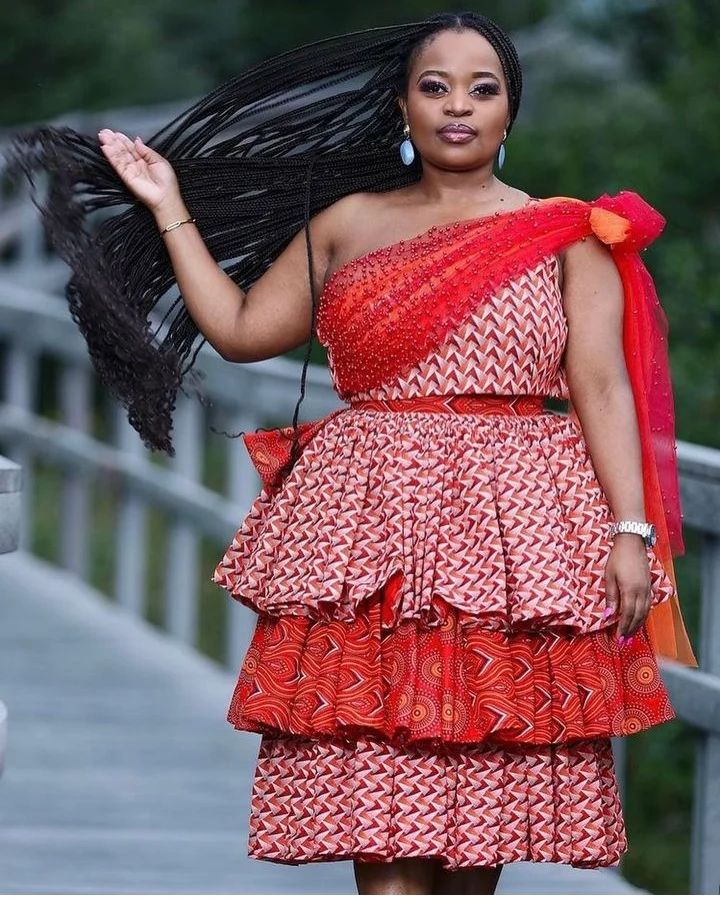
SePedi traditional attire, is an expression of the cultural heritage of the Pedi people, who are predominantly found in South Africa's Limpopo province. The SePedi traditional attire is a reflection of the Pedi people's cultural identity, beliefs, and values.
The Pedi people have a rich history that is reflected in their traditional attire. Their traditional attire is not only beautiful but also has significant meaning behind it. It is worn during cultural events, such as weddings, initiation ceremonies, and other traditional celebrations. The attire is also worn on a daily basis by some Pedi people who take pride in their culture.
The SePedi traditional attire for women consists of a brightly colored skirt, which is usually made from printed cotton material. The skirt is known as a "thabana," and it is worn with a blouse called a "modisana." The blouse is usually brightly colored and is adorned with embroidery or beading. The Pedi women also wear a headwrap called a "doek," which is made from the same fabric as the skirt and blouse.
The Pedi women also wear a leather apron called a "tshogwana" over their skirts. The tshogwana is usually decorated with beads, shells, and other materials. It is worn to signify a woman's marital status, with married women wearing a longer apron than unmarried women.
The SePedi traditional attire for men consists of a shirt called a "seshoeshoe," which is made from printed cotton material. The shirt is usually paired with pants made from the same material. The Pedi men also wear a leather belt with a silver or brass buckle, which is adorned with intricate designs.
The men also wear a headwrap called a "phororo," which is usually made from animal skin or fabric. The phororo is worn to signify a man's status within the community. The Pedi men also wear traditional sandals made from animal hide.
The SePedi traditional attire is more than just clothing. It is a symbol of the Pedi people's cultural identity, and it represents their beliefs, values, and way of life. The clothing is also a reflection of the Pedi people's history, with the patterns and designs on the fabric telling a story of the past.
In recent years, the SePedi traditional attire has gained popularity among young South Africans. Many young people are embracing their cultural heritage and are proud to wear the SePedi traditional attire. This trend has also been encouraged by the government, which has made efforts to promote traditional attire as a way of preserving South Africa's cultural heritage.
In conclusion, the SePedi traditional attire is a beautiful and meaningful expression of the Pedi people's cultural heritage. It is more than just clothing, but a symbol of their identity and way of life. As South Africa continues to embrace its cultural diversity, the SePedi traditional attire remains an important part of the country's rich cultural heritage.


